William Morris “Father of Arts & Crafts”
Think "pioneer of modern design," and, chances are, the first names that come to mind are Charles and Ray Eames, Le Corbusier, or Mies van der Rohe. But one of design history's most influential modernists is actually someone who was working a near-century before the midcentury scions: William Morris.
Discover William Morris Pattern Shirts Tout
Who was William Morris?
William Morris was born in 1834 into a wealthy family in a town in East London. His passing through the University of Oxford, where he studied architecture, art and religion, would mark his personal life and work enormously.
It was in his student days that he met the ideas about rejecting industrialization and returning to the trades of John Ruskin; Pre-Raphaelite painters such as Dante Gabriel Rossetti, Edward Burne-Jones, Ford Madox Brown or the neo-Gothic architect Philip Webb; or develop his literary interest in poetry with the Birmingham Setwith William Fulford, Richard Watson Dixon, Charles Faulkner and Cormell Price.
Britain’s medievalist movement in the second half of the 19th century was a form of romanticism that rejected many of the values of Victorian industrial capitalism as opposed to an era with strong chivalric values and an organic, precapitalist sense of community. Influenced by the medieval architecture of the city and in a context of growing romanticism and medievalism in Europe, Morris would build all of his artistic discourse and practice around the values of this time.
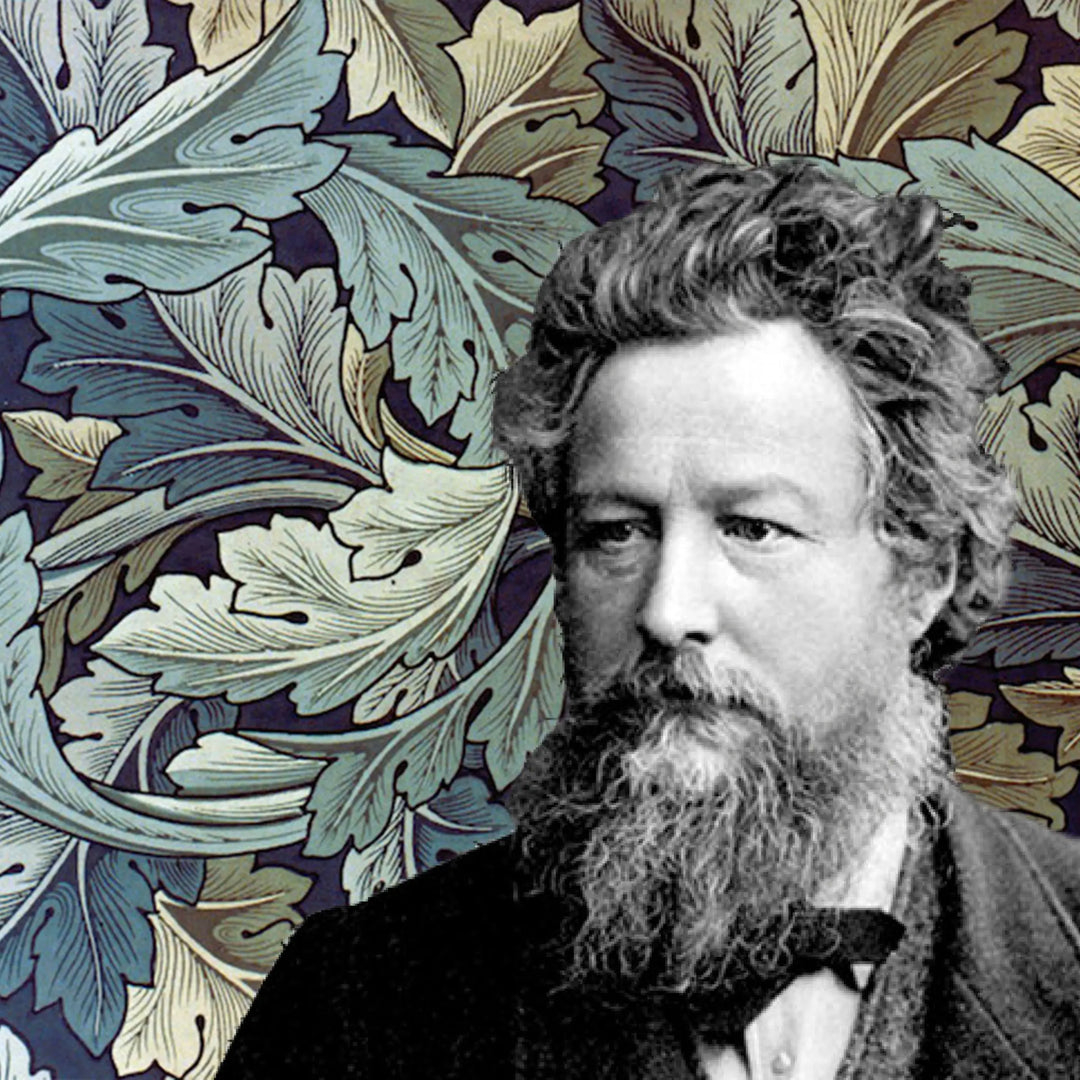
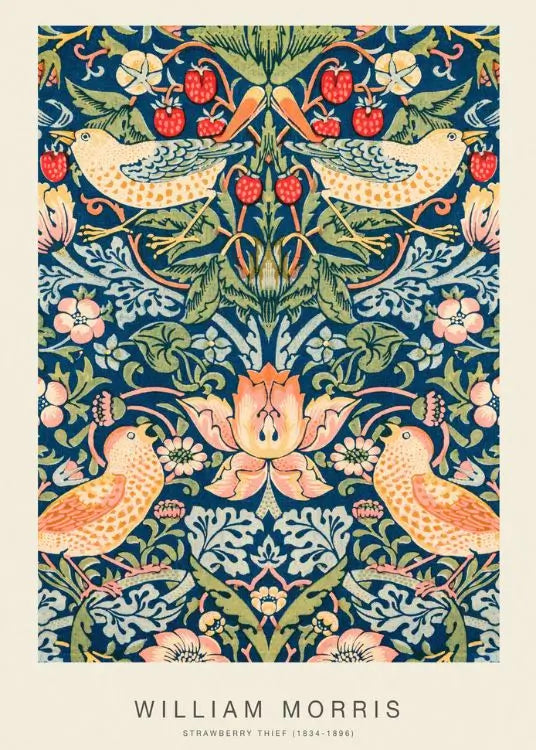
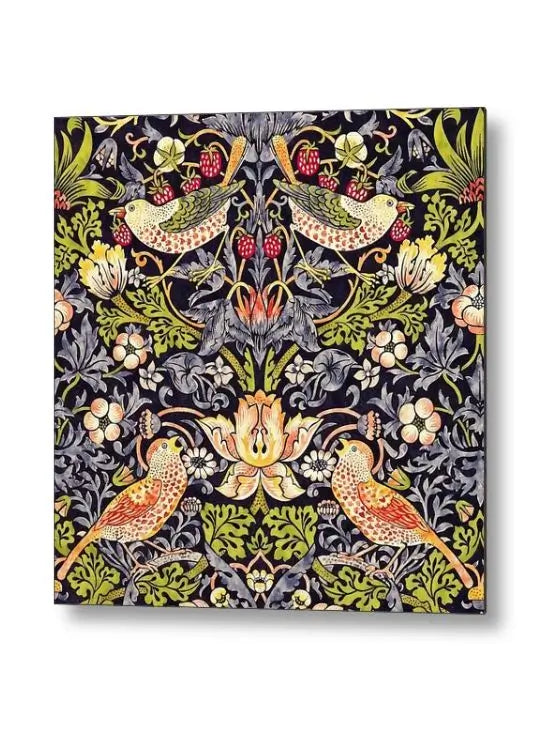
"Strawberry Thief"
One of Morris's most famous creations is "Strawberry Thief," which drew inspiration from his own strawberry garden at Kelmscott Manor in the UK. The artwork portrayed a thrush stealing strawberries amidst the garden. Morris held a fondness for these "thieves," which prompted him to create this masterpiece.
The "Strawberry Thief" style reflects the characteristic aesthetic of the Arts and Crafts Movement, which was seeking to revive the beauty of traditional crafts and handmade objects. Morris was inspired by natural and botanical motifs to create his designs, and "Strawberry Thief" demonstrates his ability to capture the beauty of nature in a decorative and detailed style.
This painting is also important because it represents Morris' interest in protecting the environment and preserving wildlife. The birds represented in the painting symbolize freedom and wild nature, while the strawberries symbolize the richness and beauty of the earth. Through his work, Morris wanted to create a deeper connection between man and nature, and "Strawberry Thief" is an example of his commitment to this ideal.
"Acanthus Leaf"
"Acanthus Leaf" (1875), acanthus leaf is undoubtedly the most important representative decorative pattern in the West, whether it is Baroque, Renaissance or Gothic. Acanthus leaves grow in the Mediterranean Sea in southern Europe. They have an elegant curling posture and symbolize family harmony. Even though the print "Acanthus Leaf" is a two-dimensional design work, Morris still uses realistic techniques to achieve a strong layered effect through color changes of different elements. The whole picture is full of life and rhythm, creating a modern Another first for pattern design.
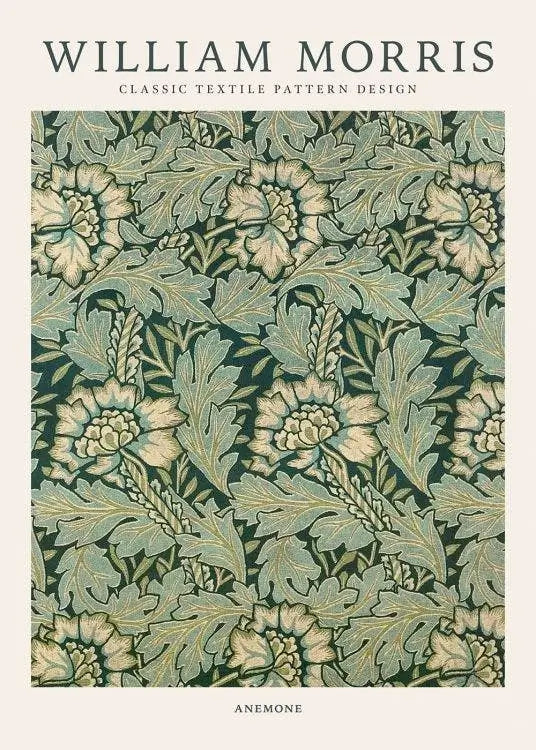
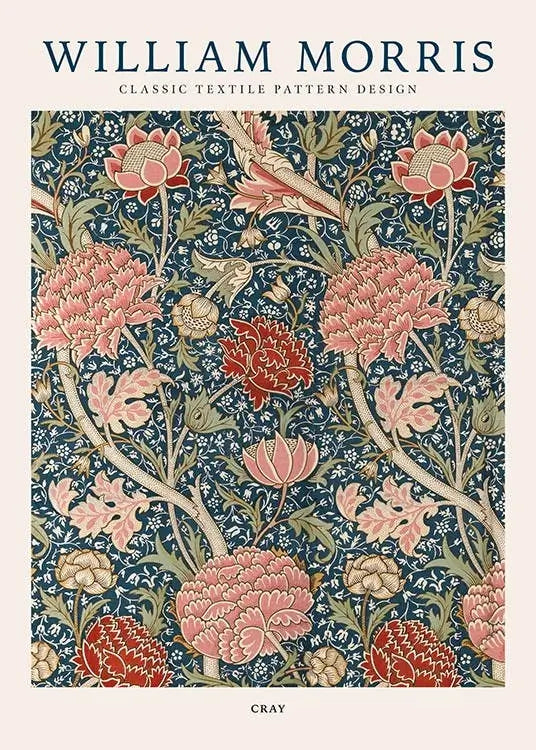
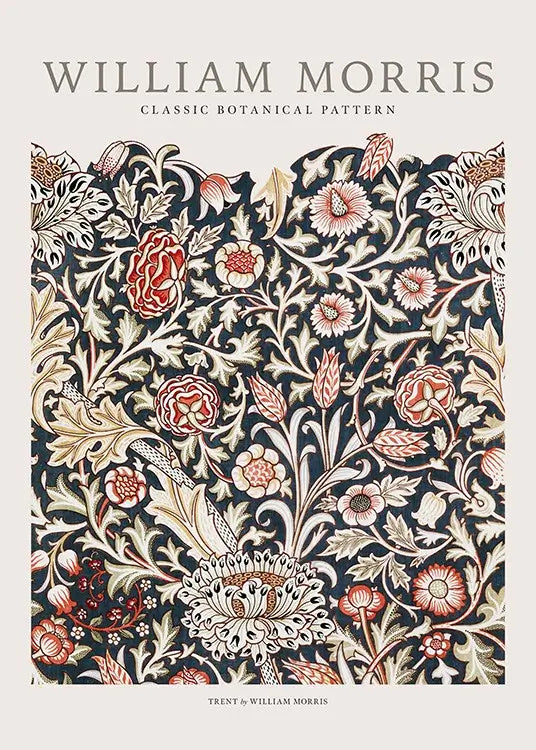
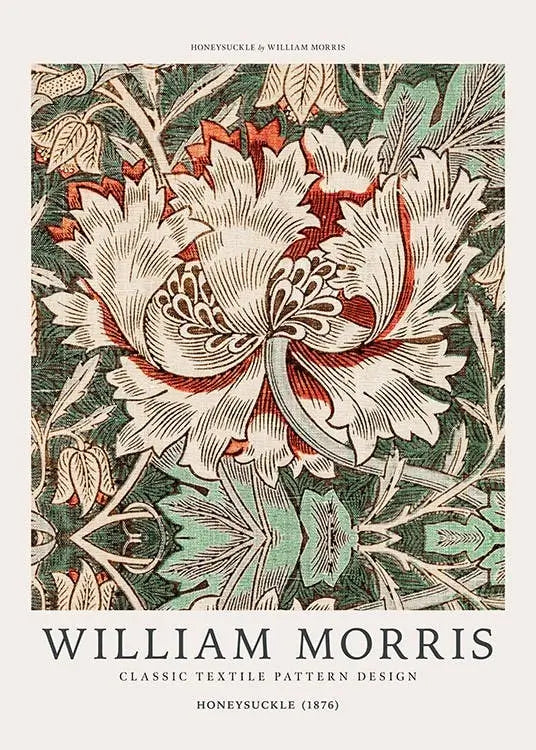
"Honeysuckle Vine"
"Honeysuckle Vine"(1883), the sweet scent of honeysuckle must be one of nature's greatest simple' pleasures. Immortalised by May Morris, William Morris's daughter, in this 1883 design, Honeysuckle is a flowing, complex pattern that mimics the plant's tendency to climb and bind.
"Willow Branches"
'Willow Bough' is one of William Morris's most enduring wallpaper designs, in continuous production since 1887.The pattern consists of willow branches that form a diagonal branch pattern over the plain background.
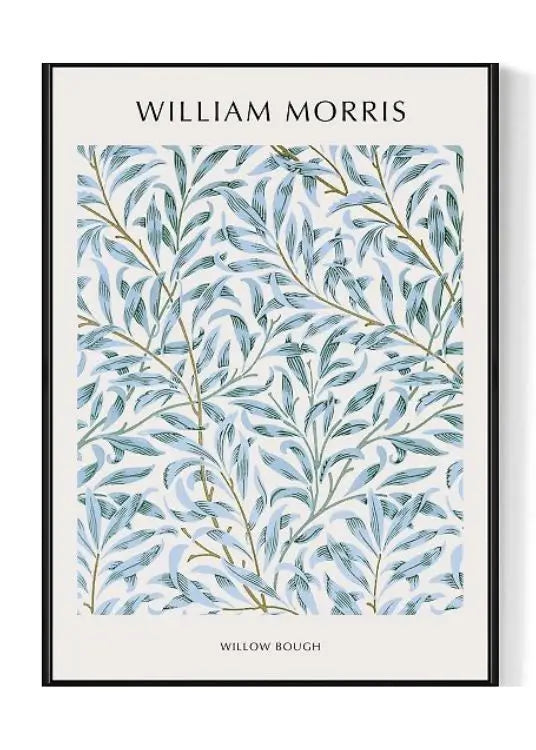
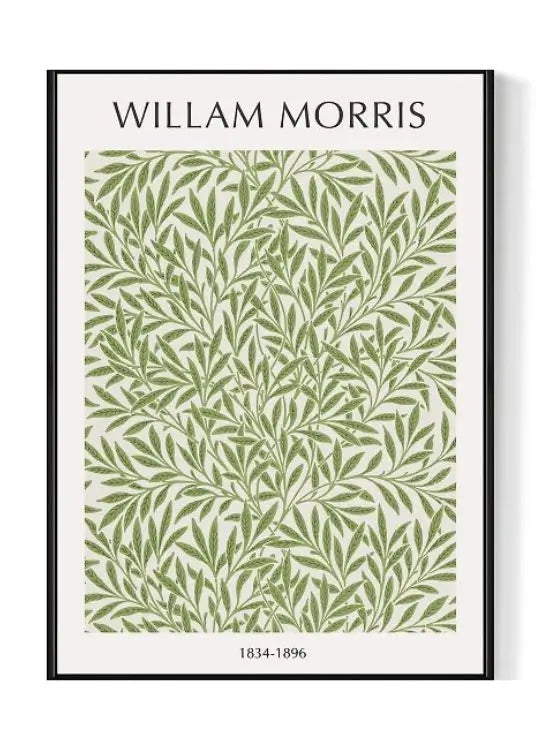
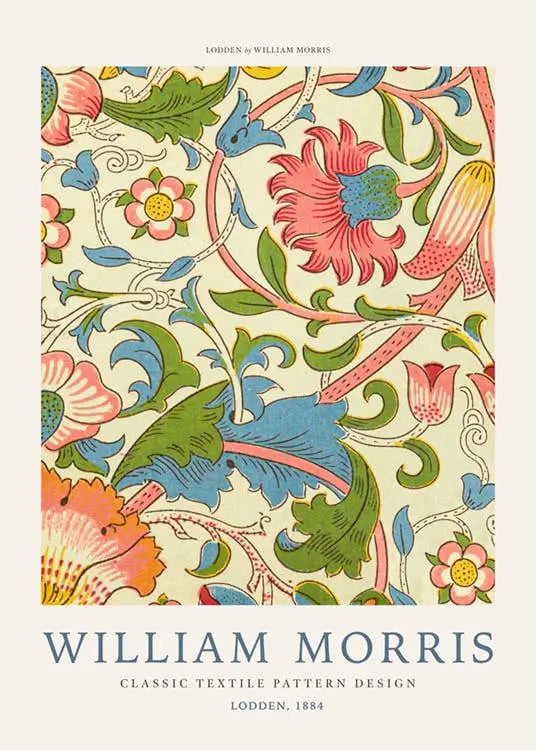
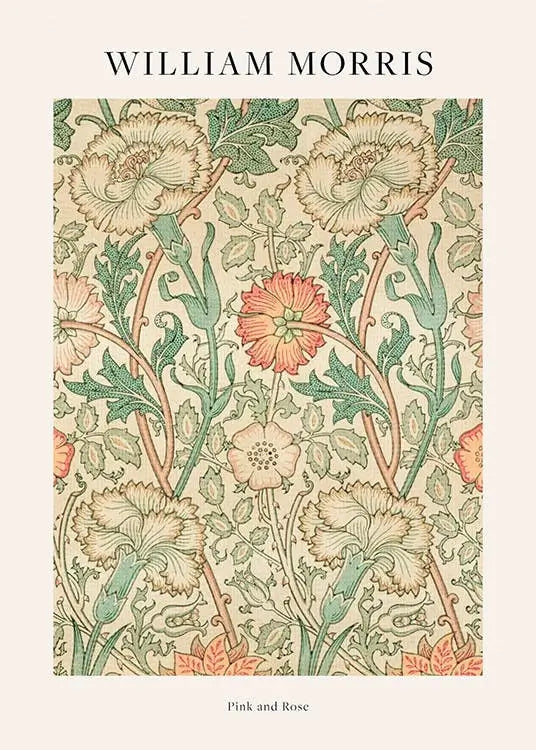
"Pink and Rose"
"Pink and Rose," from about 1890, is typical of his late style, which is characterized by naturalism and a clearly articulated repeating pattern.















